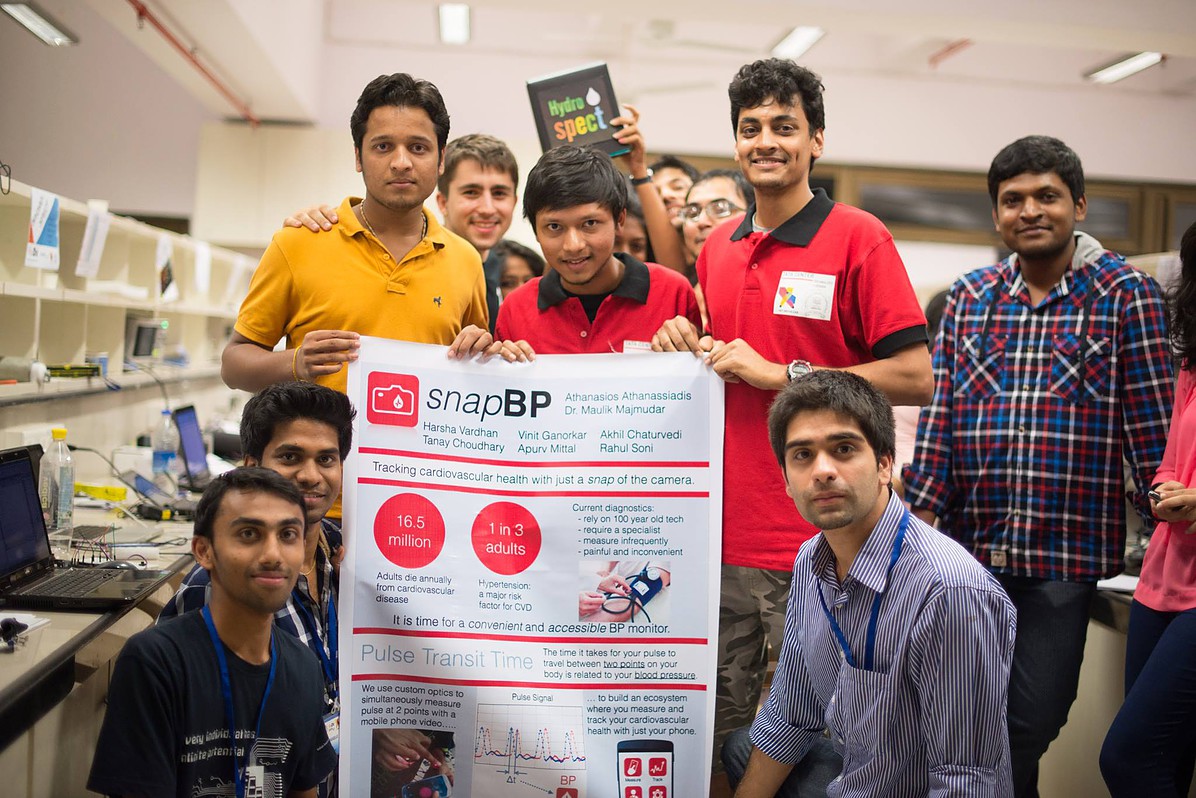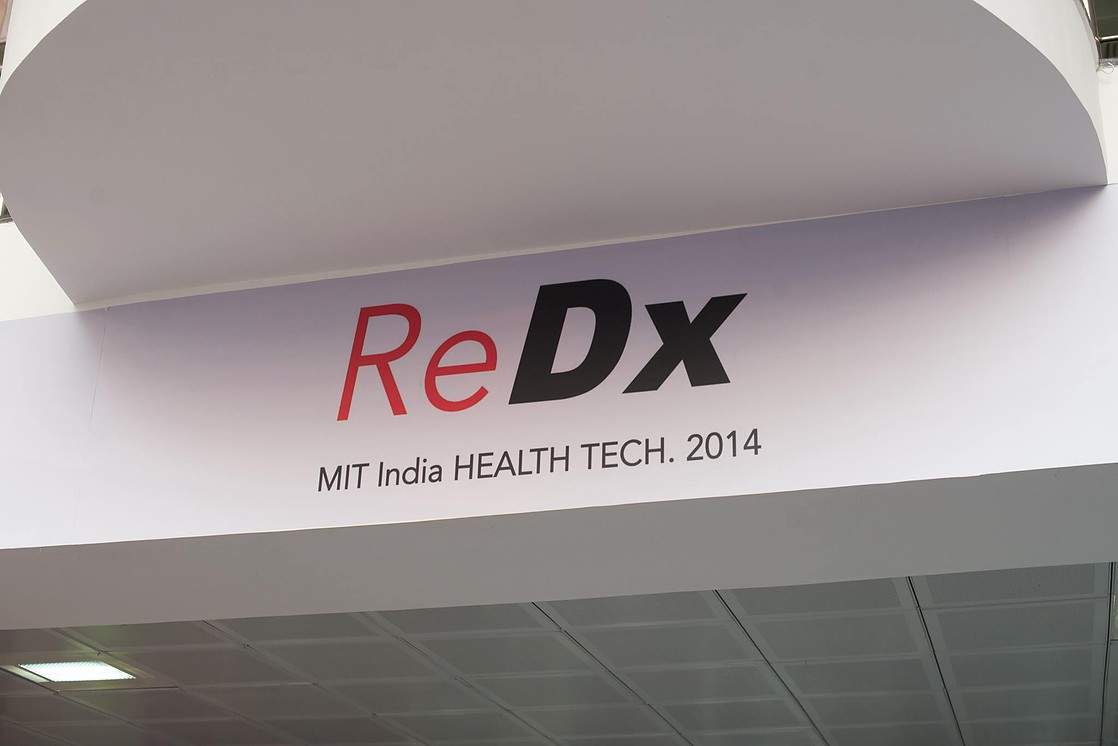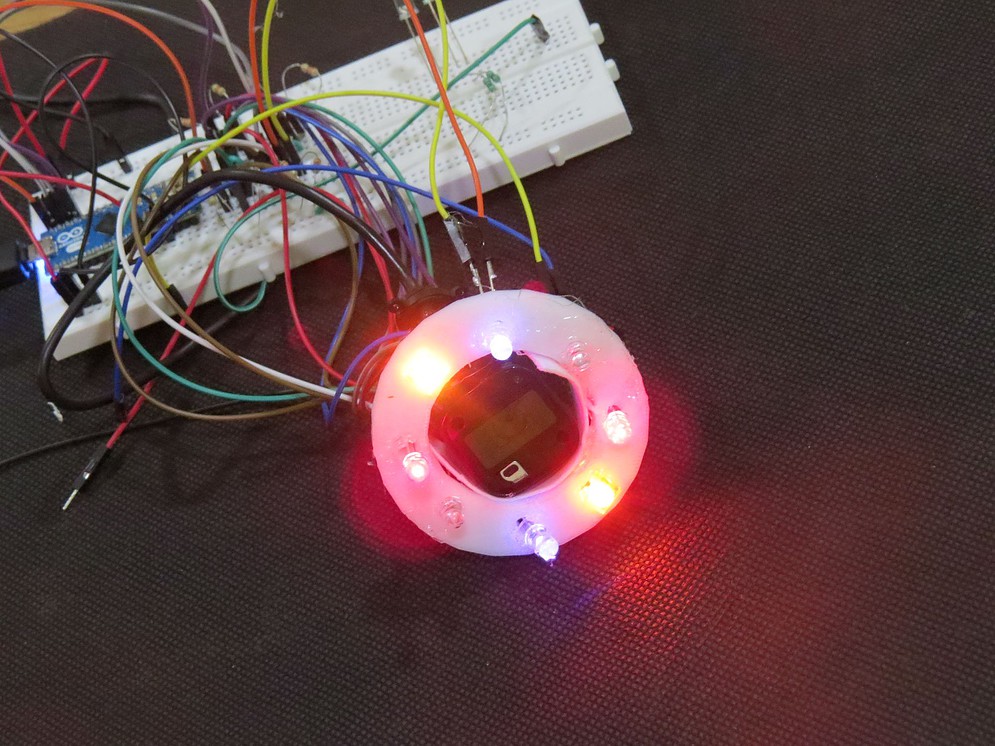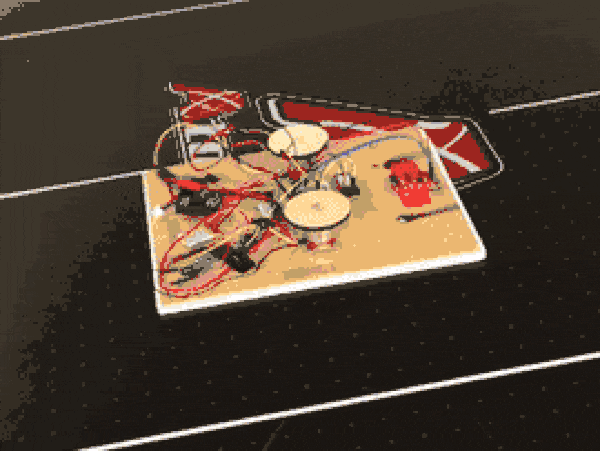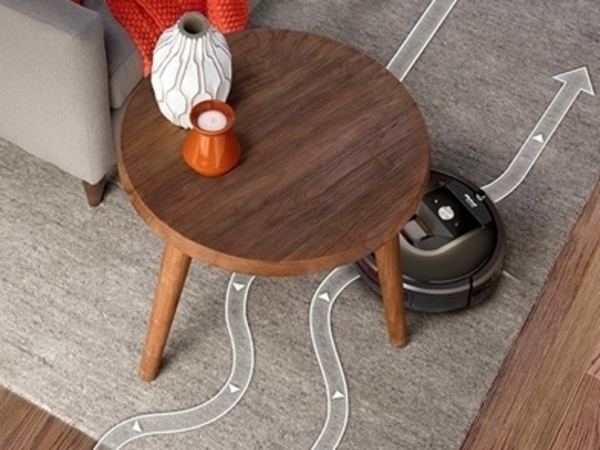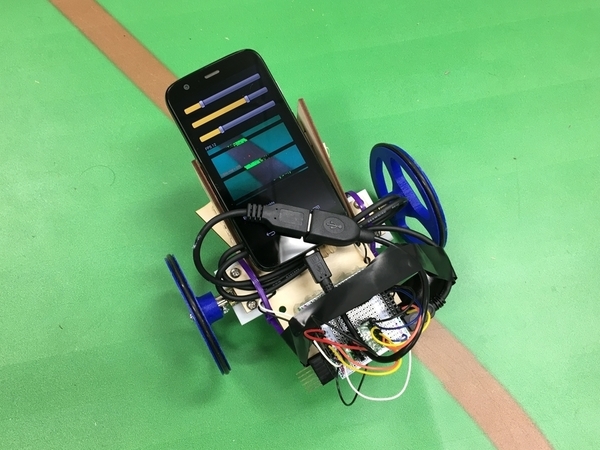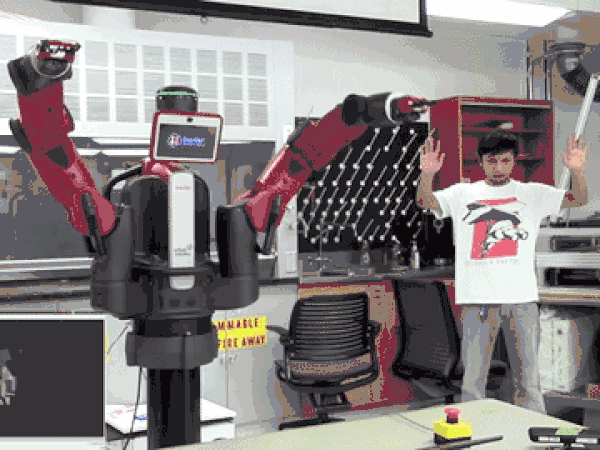Rethinking Diagnostics with MIT Media Lab
In my junior year as an undergraduate, I participated in a series of workshops conducted by the Camera Culture group, MIT Media Lab. The workshops, which brought together engineers, designers and clinicians from all over India, aimed at developing portable, low-cost medical diagnostic devices for India’s primary healthcare sector. Collaborating closely with researchers from MIT, IIT Bombay, Harvard Medical School and LV Prasad Eye Institute resulted in a highly stimulating learning experience. Each workshop was an intensive week-long process which started with team formation and brainstorming, going through several iterations of prototyping, and ended with each team pitching their proof-of-concept product to an open house.
Some of the projects I worked on included:
snapBP
Jan 2014, IIT Bombay
A non-invasive smartphone-integrated system comprising of a custom optics attachment and an app that enables cuff-free blood pressure measurement. Pairing two fiber-optical wires to a mobile phone’s camera, we obtain the photoplethysmographic (PPG) signals from two locations on the body simultaneously. We resolve the PPG signal through use of the rolling shutter, a technique used in most low-cost camera sensors that renders each pixel row of an image one at a time. This gives the pulse transit time between the locations, which correlates with a person’s BP.
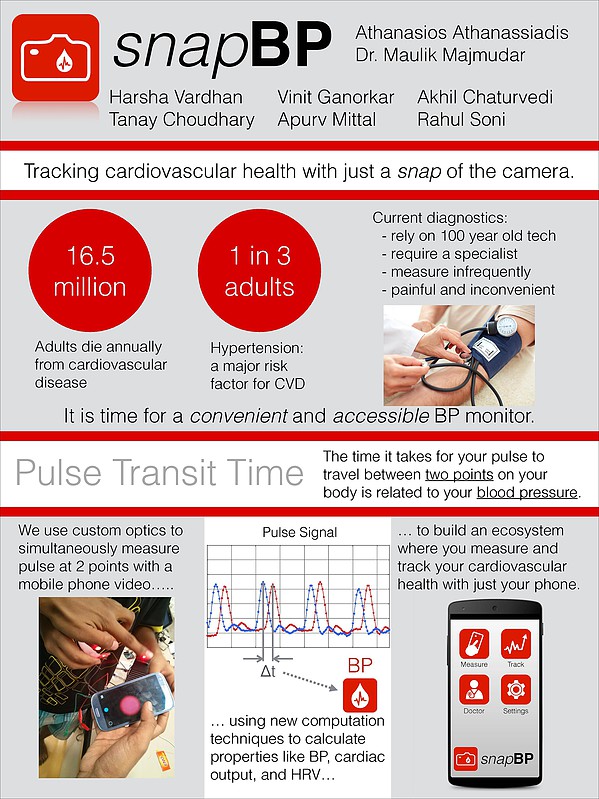
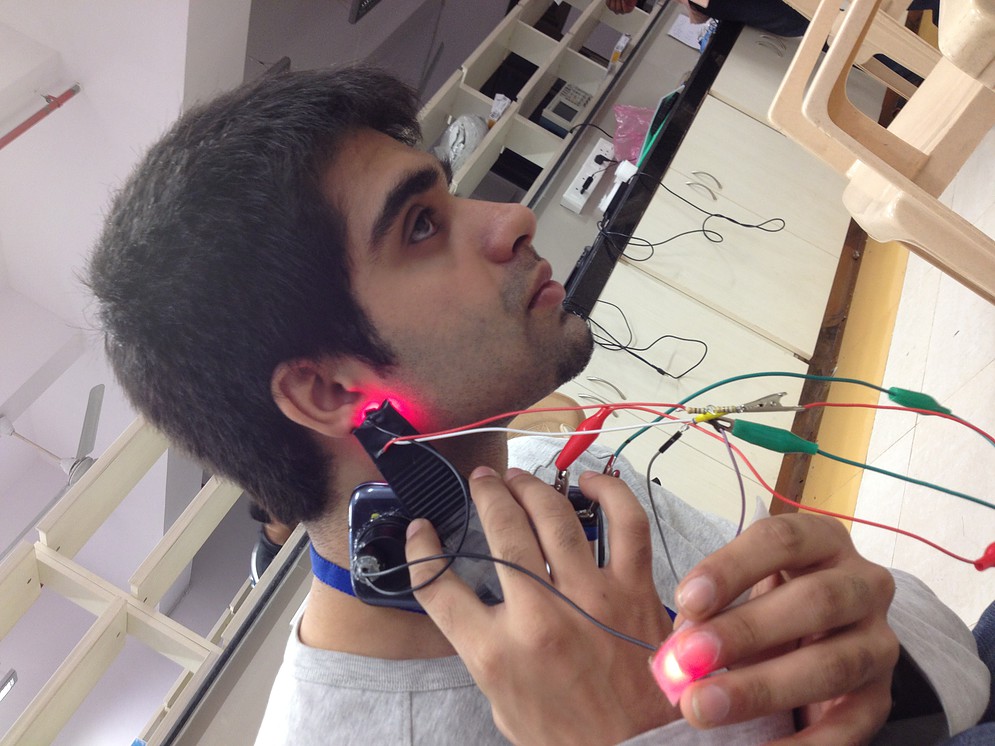
Eyecorder
Oct 2013, LVPEI Hyderabad
A portable multispectral imaging platform for the anterior segment of the eye, which can capture, process and consolidate in real-time, multiple images taken over a range of focal planes to extract rich, clinically relevant visual information from different depths of the anterior segment.
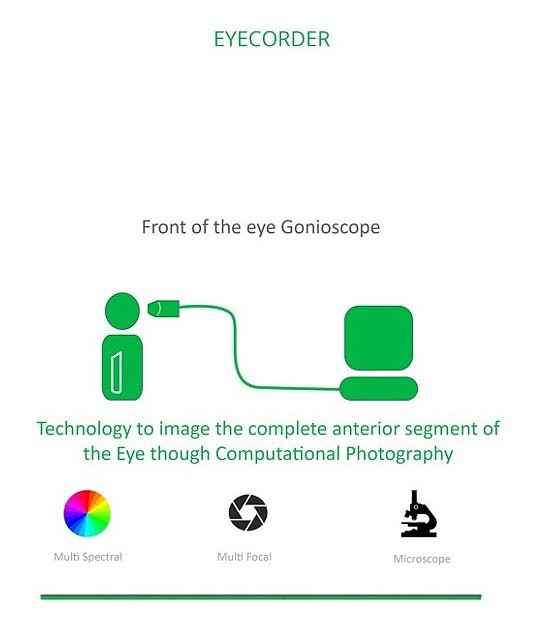

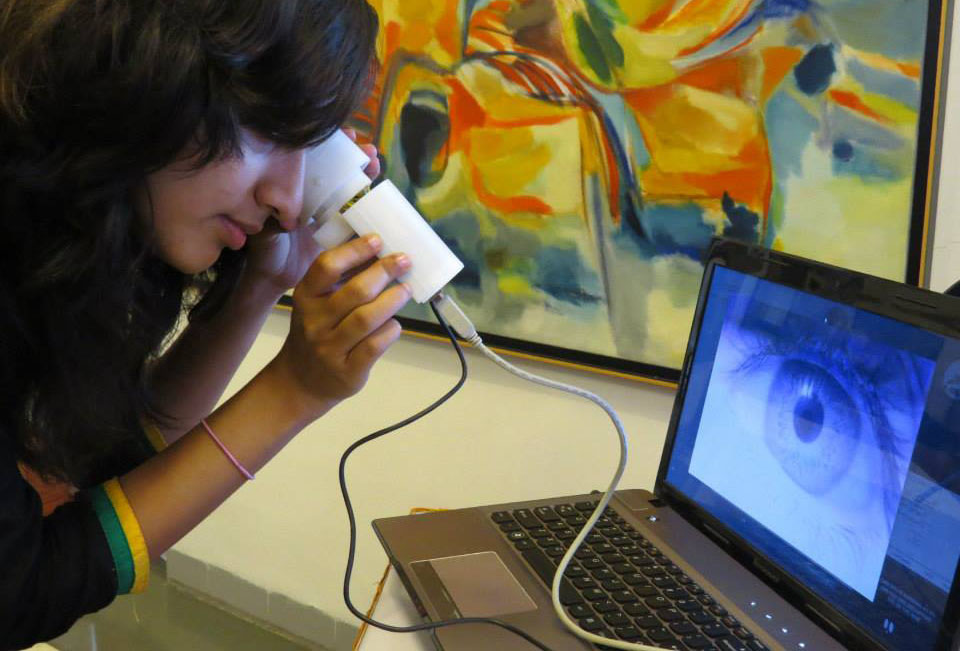
In both of the above, my efforts were spread into device design, optics, and image processing.
